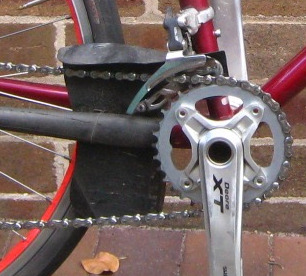The point of swapping chains early is to keep all parts of a drivetrain (chain, chainring, cassette teeth) at a similar level of wear so that force is evenly applied to the contact points of teeth and chain. Each part wears out at different rates because of differences in material, usage, dirt, load, etc, so if you just run a drivetrain in to the ground without swapping, you are effectively prematurely destroying the cassette, which lasts the longest. At the extreme, if you use a new chain on old teeth or vice versa, only a few teeth and links take the load, so it skips and dies an early death.
So by swapping chains before they are severely worn, you save your chainring mostly, which in turn helps save your chain, which helps your cogs, etc...
Running a 1x8 set up, I currently use a ratio of 1 chainring (that I flip and rotate, making them effectively 2+ chainrings), two chains (that I also flip, though I dunno how effective it is), to one cassette. I don't measure mileage, so I can't say how effective all this is, but it seems pretty grounded in logic and keeps the drivetrain snappy.
If you really want to extend the life of your drivetrain, you should have some kind of mudguard to protect your drivetrain. I made this chainguard out of a sheet of polypropylene and it works fine, aside from limiting fat tyres. I have found that I apply lube about 1/3 less frequently with this set up (I don't ride much in rain) and extended my drivetrain overhaul interval by about 50%.
I have also heard that you should cut your chain to be as long as possible for performance reasons I think. Makes some sense in terms of longevity, since you have more links, as long as you're not a weight weenie

.
One last tip from Sheldon Brown: don't clean a new chain! The oil on it is better than any lube that I have tried.
